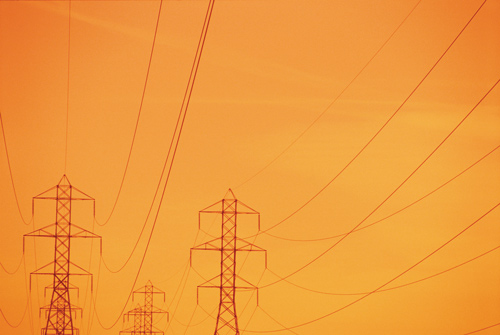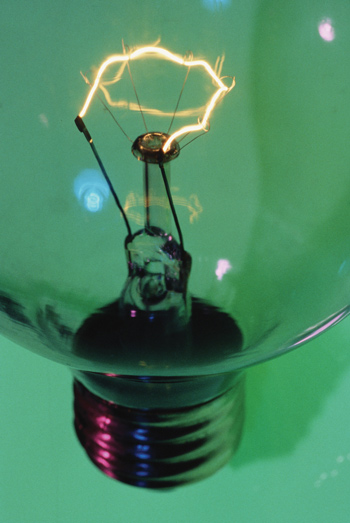SMART GRIDS & ELECTRIC VEHICLES: MADE FOR EACH OTHER?


Electric vehicles are a potentially significant route towards low carbon transport but widespread adoption of e-mobility will lead to greater consumption of electricity. Existing electricity systems will need to be reconfigured to meet these needs if reliance on fossil fuels is not to increase. In a paper looking at the potential of Smart Grids and electric vehicles to change and improve electricity systems worldwide, the International Transport Forum found that:
- Smart Grid technologies make it possible for electric vehicles to proliferate without overloading the electric supply industry and at the same time electric vehicles are driving investment in Smart Grid technologies;
- Electric vehicles may be useful for matching intermittent solar and wind power supplies to demand, soaking up excess off-peak power supply and feeding power back into the grid when needed;
- Electric cars may be attractive to some home owners for their capacity to produce some backup supply in case of power cuts;
- Governments need to change the regulation of electricity prices to encourage the uptake of Smart Grid technologies and the use of cars for supplying power to the grid.
|
| A Smart Grid is an electricity network that uses digital monitoring technologies to efficiently deliver electricity wherever and whenever it is needed. Smart meters are equipped with sensors, switches and communications capabilities which enable connection to a PC or directly to smart appliances in the home and office, enabling installations to be controlled automatically. The meter is in communication with the grid company allowing for remote control by the company and providing instant access to electricity consumption and pricing information to customers. |
 |
Smart Grids better co-ordinate electricity supply and demand
|
Smart Grids allow for better co-ordination of the needs and capabilities of all electricity market stakeholders in operating all parts of the system as efficiently as possible, minimizing costs and environmental impacts while maximizing system reliability, resilience and stability.
Significant investment is required in the grid
|
 |
Making grids smart requires significant upfront investment but it offers the prospect of reducing the overall cost of electricity supply. Already, electric utilities have begun to deploy Smart Grid technologies enabling household and commercial customers to schedule charging in a way that minimizes costs to them and to the utility. |
Electric cars as storage devices
| As the use of electric vehicles (EVs) grows, their demand on electricity load will need to be carefully managed in order to avoid problems in peak load periods, for example, when motorists plug in their cars to recharge at the end of the working day. Smart Grid technologies enable charging load to be shifted automatically to off-peak periods regardless of when the EV owner plugs in the vehicle. This applies to private vehicles charged at home and to fleet vehicles in commercial operation. Both can benefit from low off-peak electricity charges through smart meter enabled charging. Managing demand in this way can significantly reduce generation and network investment needs as well as minimizing CO2 emissions from electricity generation. |
 |
Payoff in reduced investment in power stations and lower CO2 emissions
|
Electric vehicles could be used to regulate peak load on the grid
Making money with cars that feed the grid
|
 |
In the longer term, there may be some potential for Smart Grid technologies to enable EVs to be used as distributed storage devices. EVs could feed electricity stored in their batteries back into the system (Vehicle-to-Grid, or V2G) or directly into the home or office (Vehicle-to-Home, or V2H). Vehicles are parked an average of 95% of the time providing ample opportunity for their batteries to be used for V2G supply. An EV owner with no immediate need for his vehicle may be willing to feed power into the grid if the price the grid company pays for this power is high enough.
|
EVs, Smart Grids and renewable energy
The share of electricity generated from renewable energy sources, such as wind and solar energy, is growing in response to the need to cut greenhouse gas emissions and reduce reliance on fossil fuels. The output of solar and wind power supplies is dependent on the weather.
| The intermittence of supplies becomes a problem as the use of these energy sources increases. They make it increasingly difficult to ensure reliable and stable management of the electricity system. The demand management and load following potential of Smart Grids needs to be exploited to compensate for this variability in electricity supply. Smart Grids also permit the storage potential of EV batteries to be used to smooth variable renewable electricity output. Batteries can store wind power output at night when demand is at its lowest. They can store solar output in the middle of the day when it is surplus to requirements in cooler climates. Smart grids and EVs could be mutually beneficial: EVs could both benefit from and help to drive forward investment in Smart Grids. |
 |
Solar and wind powered cars
|
EVs can both benefit from and drive forward investment in smart grids
EVs could increase peak demand 20% in the long term
|
 |
EVs could grow to account for a substantial share of total electricity consumption and peak load increasing peak demand by over 20% in some long term scenarios. The greater the increase in consumption, the larger the potential benefits from Smart Grid technologies that improve the ability of the electric utility to follow load, and schedule EV charging outside of peak hours.
However, given the significant barriers to the widespread commercialization of EVs, in particular their higher overall cost and limited range between charges, the deployment of EVs – and, therefore, their associated electricity demand – appears set to remain relatively modest in the short to medium term.
|

Potential barriers to Vehicle-to-Grid supply
Vehicle-to-grid electricity supply is technically possible, yet it remains uncertain whether it will prove to be economically viable on a large scale. Some potential barriers include the following:
- Unpredictability: The availability of V2G capacity during peak demand periods is uncertain.
- Battery efficiency: Technology is not yet available to design batteries efficient enough to be commercially viable under the frequent charge/discharge regime required for intensive V2G use.
- Cost of managing fragmented V2G supply: While the Smart Grid technology already exists to manage V2G supply, it has not been demonstrated yet on a large scale. The sheer number of EV connection points
that would need to be managed makes it prohibitively expensive at present.
In light of these factors, the potential for V2G in practice is likely to prove to be small relative to G2V unless charging times can be reduced significantly and battery storage capacity increased markedly.
| V2H systems are currently leading the development of smart charging systems with interest in plug-in hybrids as part of experiments with “positive energy buildings” that generate power on-site. Nissan has begun marketing an option for its electric Leaf model in Japan to provide emergency back-up for households in case of electricity supply interruptions. |
 |
Cars could help power homes
|
Pilot projects
Much of the technology needed to integrate EVs into a Smart Grid is still under development. It needs to be demonstrated on a large scale for testing in real world operating conditions. The question of how regulatory frameworks need to adapt also remains to be answered. Collaboration between electric utilities, car companies, power control system manufacturers and research institutions, including on standards, can help to speed up the deployment of Smart Grid technologies and minimize costs.
Smart Grid technologies are now being tested with EVs around the world
|
 |
A large number of organizations around the world are conducting research into Smart Grids. Most industrialized countries have national development programs, or actively support private research efforts. Key pilot projects include SAVE in France, the e-Mobility Showcase (Schaufenster Elektromobilität) in Germany, E-mobility in Italy, Mobile Smart Grid in the Netherlands, Movele in Spain, Smart City San Diego in the USA and Toronto Hydro’s Smart Experience in Canada. The most advanced pilot is under construction in Israel by Better Place, a venture capital backed company based in Paolo Alto, California with plans for similar public charging networks for EVs in Denmark and Hawaii and small scale demonstration projects in San Francisco, Tokyo and Yokohama.
|
The regulatory framework
| Adaptation of the regulatory framework for electricity supply is key to making G2V and V2G technically and commercially viable. Tariff structures need to provide incentives for electricity companies to invest in Smart Grid technologies. They also need to encourage G2V charging to be carried out in off-peak hours and incentivize V2G feed-in at peak times. Tariffs need to be sufficiently attractive for vehicle owners to make their batteries available to the grid operator. Dynamic pricing will have to be made available to individual consumers as well as industry with prices varying in real time and the introduction of peak time rebates for V2G. Governments will have to change the regulation of electricity tariffs to permit and encourage necessary innovation in pricing. |
 |
Regulatory change for real-time pricing
|

© 2013 TLC Magazine Online, Inc. |

